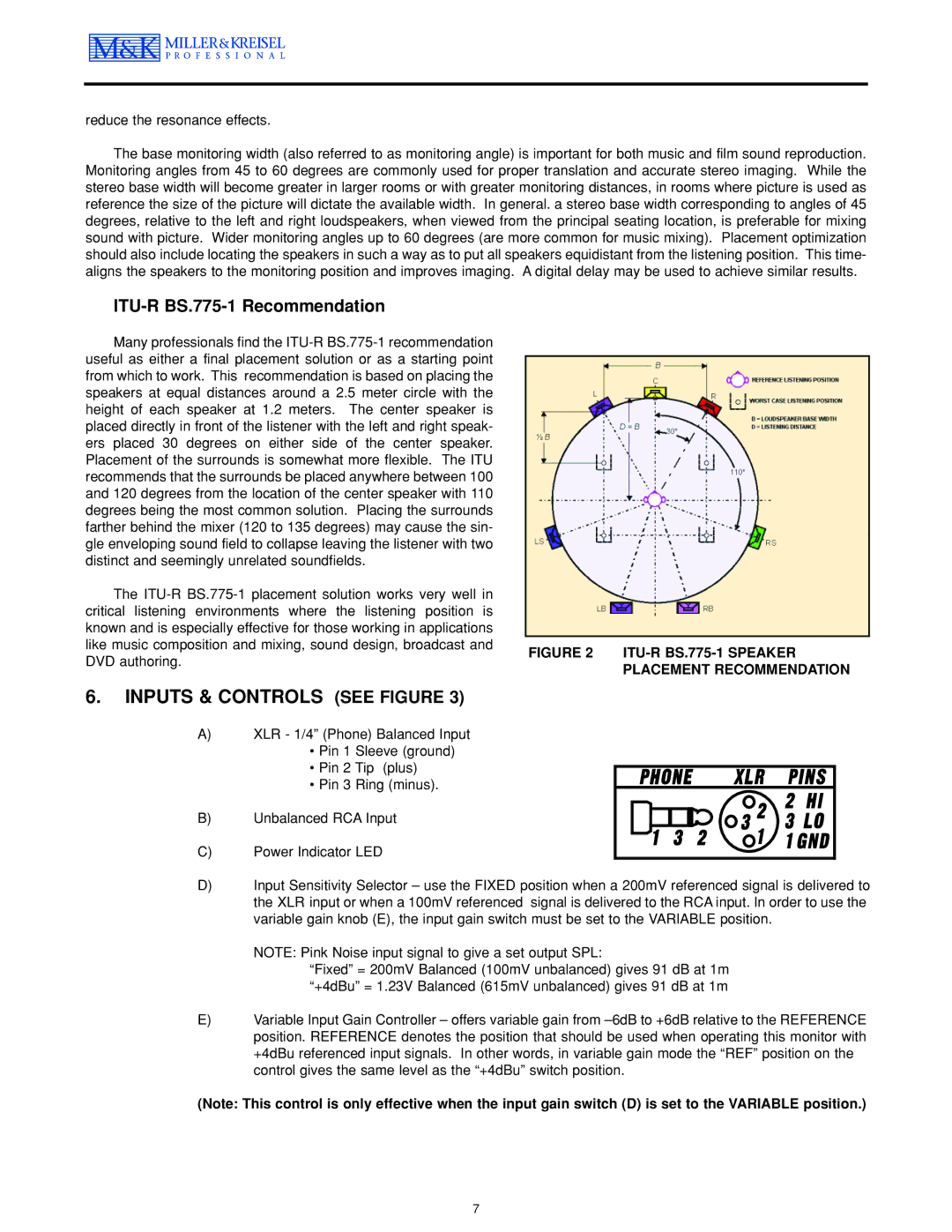MPS-1611P specifications
The MK Sound MPS-1611P is a sophisticated powered subwoofer designed to deliver deep, impactful bass while maintaining high fidelity. Ideal for home theater enthusiasts and audiophiles alike, the MPS-1611P incorporates advanced technologies that provide an exceptional listening experience.One of the standout features of the MPS-1611P is its robust 15-inch driver, which is engineered to reproduce low frequencies with remarkable accuracy and clarity. This large driver is complemented by a high-performance built-in amplifier that delivers an impressive output power, ensuring that even the most demanding audio tracks are handled with ease. The combination of the driver and amplifier results in deep, thunderous bass that can transform movies and music alike, making the MPS-1611P an essential component of a premium audio setup.
The MPS-1611P employs advanced digital signal processing (DSP) technology, which plays a crucial role in optimizing the subwoofer's performance. This technology allows for precise control over bass response, helping to eliminate unwanted distortion and enhancing overall sound quality. The DSP also enables various EQ settings and crossover points, allowing users to fine-tune the subwoofer according to their room acoustics and personal preferences.
Connectivity is another highlight of the MPS-1611P. It features multiple input options, including both XLR and RCA connectors, providing versatility for integration with various audio systems. This flexibility ensures compatibility with a wide range of receivers, processors, and audio sources, making it easy to incorporate the MPS-1611P into any setup.
Moreover, the MPS-1611P is built with durability in mind. Its sturdy enclosure minimizes vibrations and unwanted resonance, thereby enhancing the overall listening experience. The subwoofer's sleek design allows it to blend seamlessly into any decor, ensuring that it is as aesthetically pleasing as it is functional.
In summary, the MK Sound MPS-1611P is a powerful, feature-rich subwoofer that caters to those seeking superior bass performance and audio fidelity. Its combination of a large driver, high-output amplifier, advanced DSP technology, versatile connectivity options, and durable construction makes it a top choice for home audio enthusiasts looking to elevate their sound experience.

